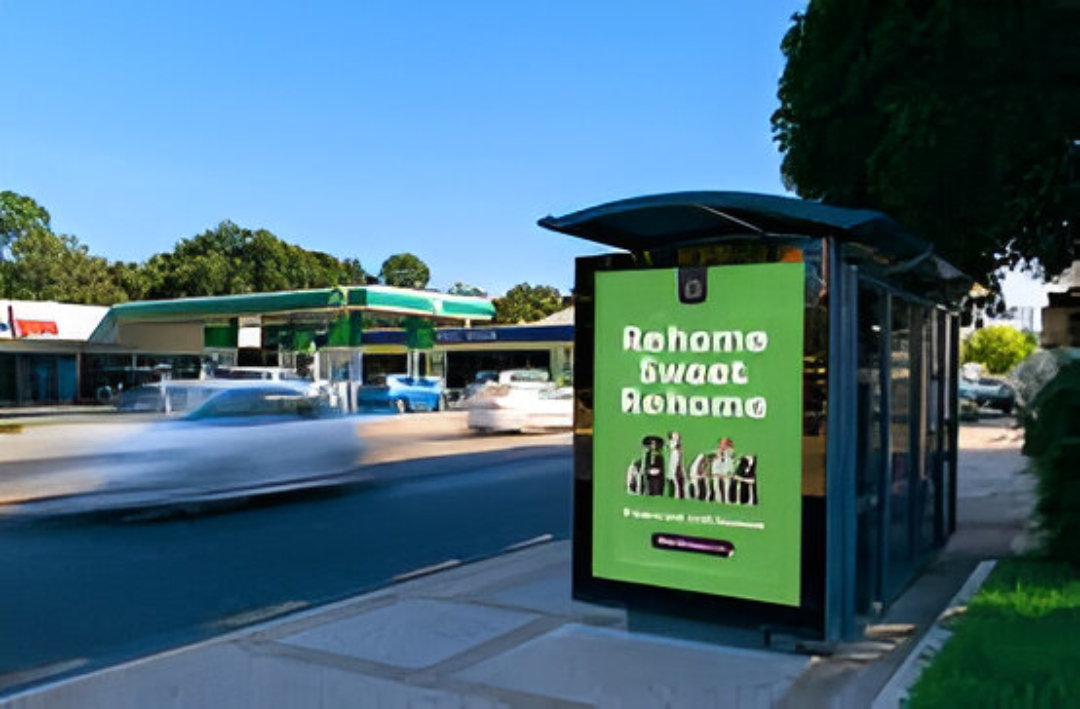
In the fast-paced digital world where online ads dominate screens and social media platforms, one might assume that traditional forms of advertising have lost their edge. Yet, bus shelter advertising continues to thrive as a relevant and effective medium.
While brands compete for attention on Instagram, YouTube, and Google, the humble bus shelter remains a powerful tool for marketers to create impact in the real world. Here is why bus shelter advertising still works and often outperforms digital clutter in the attention economy.
High Visibility with Consistent Exposure
Unlike digital ads that can be skipped or blocked, bus shelter advertisements demand attention from passersby. These shelters are typically located on busy roads and intersections where thousands of people pass every day.
Whether someone is waiting for a bus or simply walking or driving past, the ad on a shelter becomes a consistent part of their daily route. Repeated exposure plays a vital role in brand recall and recognition. This high-frequency visibility makes bus shelter advertising a reliable choice for both local businesses and large brands looking to target a specific geographic area.
Geographical Targeting Without the Need for Algorithms
Digital marketing allows businesses to target people based on interests and behavior using algorithms. However, that targeting is not always perfect and often feels invasive. Bus shelter advertising offers a more natural and organic form of location-based targeting.
If a business wants to promote an offer in a specific area or neighborhood, placing an ad at a bus shelter in that vicinity makes perfect sense. There is no need to depend on data analytics or cookies. The message is delivered directly to the people who live in or commute through the target area.
Capturing the Attention of Commuters
Commuters are often stuck in one spot for several minutes while waiting for a bus or at a traffic signal. During this time, they are less likely to be browsing their phones and more open to noticing their surroundings.
A creatively designed bus shelter advertisement can hold their attention and leave a lasting impression. The ad becomes part of their environment, offering a mental break from the constant scrolling and screen time. This real-world interaction often feels more trustworthy and credible than pop-up ads or sponsored posts online.
Enhancing Brand Credibility and Presence
Being visible in public spaces adds a sense of legitimacy to a brand. When people see a company advertising on physical structures like bus shelters, they perceive it as more established and credible.
It creates a sense of permanence and authority, which is hard to achieve through digital-only campaigns. This is especially true for new brands trying to establish trust or local businesses trying to build a presence in the community. Bus shelter ads help bridge the gap between online presence and real-world reputation.
Cost-Effective with Long-Term Impact
Compared to other traditional advertising methods like TV or billboards, bus shelter advertising is relatively affordable. It offers prolonged exposure without recurring costs for every impression or click.
A single well-placed bus shelter ad can stay up for weeks or even months, continuously engaging viewers without additional spend. For small and medium businesses working with tight budgets, it offers excellent value with consistent results.
Complements Digital Campaigns for 360-Degree Reach
The most effective marketing strategies today are those that blend traditional and digital techniques. Bus shelter advertising can complement digital efforts by reinforcing messages people have already seen online.
For example, a person might see an Instagram ad for a new gym and later notice the same gym has an ad at a nearby bus stop. This repetition across platforms builds stronger brand recall and increases the chance of conversion. It also ensures the brand stays top of mind across both virtual and physical touchpoints.
Works 24x7 Without Interruption
Unlike online ads that run during selected time slots or depend on user interaction, a bus shelter ad works around the clock. It cannot be switched off, paused, or skipped. Whether it is early morning or late at night, the ad remains visible to pedestrians, drivers, and public transport users alike. This uninterrupted exposure increases the chances of reaching a wider audience at different times of the day, making it a highly reliable medium.
Creative Canvas for Impactful Messaging
Bus shelters are not just plain boards. They offer unique creative opportunities. From illuminated panels to 3D installations and interactive features, modern shelters can be transformed into immersive brand experiences.
Some campaigns use QR codes to drive traffic to websites or apps, creating a seamless link between offline and online. This level of creativity boosts engagement and makes the brand stand out memorably.
Builds Local Connections and Community Trust
People relate more to ads that reflect their local environment and needs. Bus shelter ads are rooted in the community and often resonate with local culture and values.
They create a sense of familiarity and connection that digital ads rarely achieve. When local businesses use bus shelters to promote products, services, or events, it builds community trust and loyalty. This hyper-local approach is especially effective in tier 2 and tier 3 cities where digital penetration is still growing.
In an age where everyone is glued to their screens, bus shelter advertising brings brands back into the real world where people live, move, and interact. It is a powerful medium that cuts through digital noise and delivers messages directly to the public with clarity and consistency.
Whether used alone or as part of a broader campaign, bus shelter advertising continues to prove its worth in driving awareness, credibility, and results. Far from being outdated, it is a smart and strategic choice for marketers who recognize the importance of physical presence in the digital age.